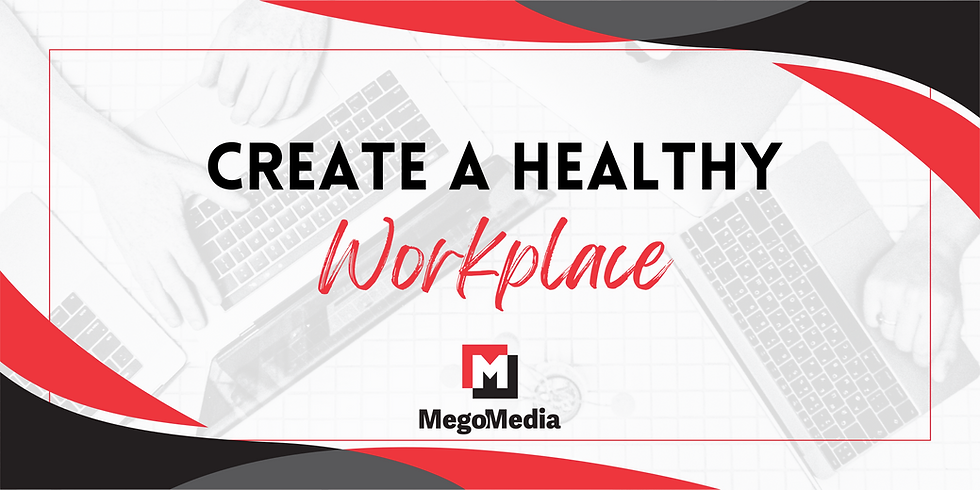The Small Business Guide to Personalizing Employee Benefits
- Paige Bethke
- Sep 4, 2023
- 4 min read

Experiencing employee retention problems? To ensure that you're attracting and KEEPING your ideal employees, you may need to shift your focus towards enhancing your benefits program. But, how?
Today, many employees are drawn to companies that show insight and understanding when it comes to employee well-being. For this reason, many companies have adopted a more personalized approach when designing their benefits offerings. In this blog post, we'll explore the concept of personalization in employee benefits, how this approach benefits employees and we'll walk you through the steps to create a personalized benefit program for your employees.
So, if you're a small business owner looking to enhance your employees' well-being and productivity, read on to discover how personalized benefits can be a game-changer for your organization.
What is a Personalized Employee Benefits Package? Personalization in employee benefits involves customizing benefit packages to cater to the unique needs and preferences of each employee.
It goes beyond the one-size-fits-all approach, recognizing that what works for one employee may not work for another. This approach acknowledges the individuality of each team member, valuing their contributions and well-being.
Benefits of Personalization for Employees: Personalization in work benefits brings several advantages for employees:
Increased Satisfaction: When employees receive benefits tailored to their specific needs, they are more likely to be satisfied with their job and the organization as a whole.
Higher Retention Rates: Personalized benefits can help retain valuable talent, reducing turnover and recruitment costs.
Enhanced Motivation: Knowing that their employer cares about their well-being motivates employees to perform at their best, leading to improved productivity and performance.
Your Guide: Offering Personalized Benefits at Your Company
I know what you're thinking... this sounds like something only large companies can afford to offer. That's where your wrong! While it may cost a little more on the front end, the cost of retaining employees will end up saying you precious time, money and resources in the long run.
Step 1: Understand Your Employee Before you start looking into benefit options, take a moment to think about your current and ideal team of employees. What are their needs and preferences? Factors like age, family size, and life goals all play a part. The best part about this step is that you don't need to guess! You can send out surveys or hold meetings on the topic to gather feedback. Ask your team which types of benefits they would pick if they had unlimited options and ask them to prioritize those benefits.
Step 2: Research Benefit Options
Employers have gotten pretty creative over the years in attempts to retain employees so the list of potential benefits you could offer your employees is essentially endless.
Here are some common ones that you could list on your menu in addition to the standard medical, dental, 401k and paid time off, but don't be afraid to think outside of the box:
Flexible Work: Since we're living in a post-pandemic world, many companies have learned how to offer some type of remote options. If you can't do that, you can also offer flexible work hours or shorter workweeks.
Health + Wellness Programs: People love when companies show they care about well-being. You could offer gym memberships, wellness retreats, mental health support services, yoga classes, nutrition programs, etc.
Financial Benefits: If you have limited flexibility with salary, another way you can get more money in your employee's pockets is with programs like financial planning or student load assistance.
Professional Development: Invest in your employees area of expertise. This is a win-win for you; happier employee who is more skilled or knowledgeable in their role. Pay for them to attend conferences, provide continuing education reimbursement, etc.
Family Support: There are so many ways you can support an employees family through their benefits. Some ideas are family savings accounts, paid parental leave, lactation support and bereavement leave.
Additional Leave Options: Time away from work for any reason is increasingly valuable to the average employee. In addition to vacation and sick leave, consider paid volunteer time or a sabbatical program.
Step 3: Create Your Budget
Determine the budget for your personalized benefits program. Remember, the customizable option in itself will be appealing so don't forget to factor that in when determining your budget. Look into the costs associated with each program. Tip: For options that are expensive but extra appealing to your employees consider a cost-sharing option to make the program sustainable.
Step 4: Make Your Menu
Determine which benefits you can afford to offer and then create a menu of benefits or allowing employees to choose from a selection of options based on their individual circumstances.
Step 5: Monitor and Evolve
After you've implemented your program, don't for get to monitor it's effectiveness. Are employees expressing satisfaction with your benefits offerings? Has your employee retention improved? Taking the time to evaluate your programs effectiveness will allow you to make necessary tweaks so that the program can evolve into the perfect fit for your ideal employees.
One final tip: when interviewing potential employees, don't make the mistake of failing to disclose your benefit information to prospective employees. According to a survey conducted by BambooHR, 68% of job seekers want to know what benefits companies offer, yet only 36% of HR professionals disclose benefits up front.
As the workforce becomes more diverse and dynamic, the personalization of employee work benefits is a great way to attract, retain, and empower your talent. This approach will also help you develop mutual growth as it contributes to long-term success and sustainability for you business and fosters employee satisfaction. Remember, developing an effective benefits program is a ongoing process and you will learn what works and what doesn't along the way. Questions about how to get started or how to enhance your benefits program for optimal performance? Reach out to us today!




Comments